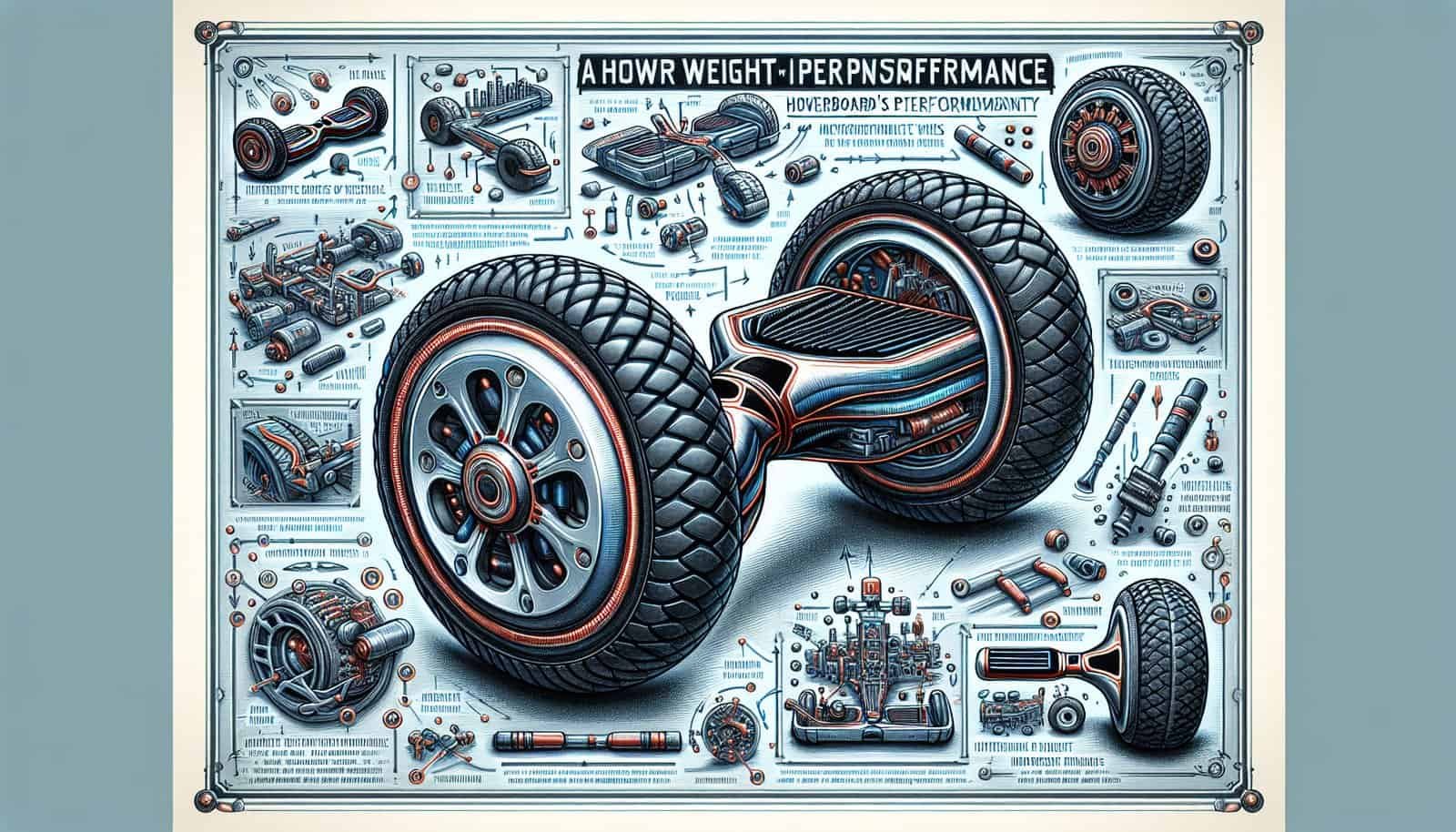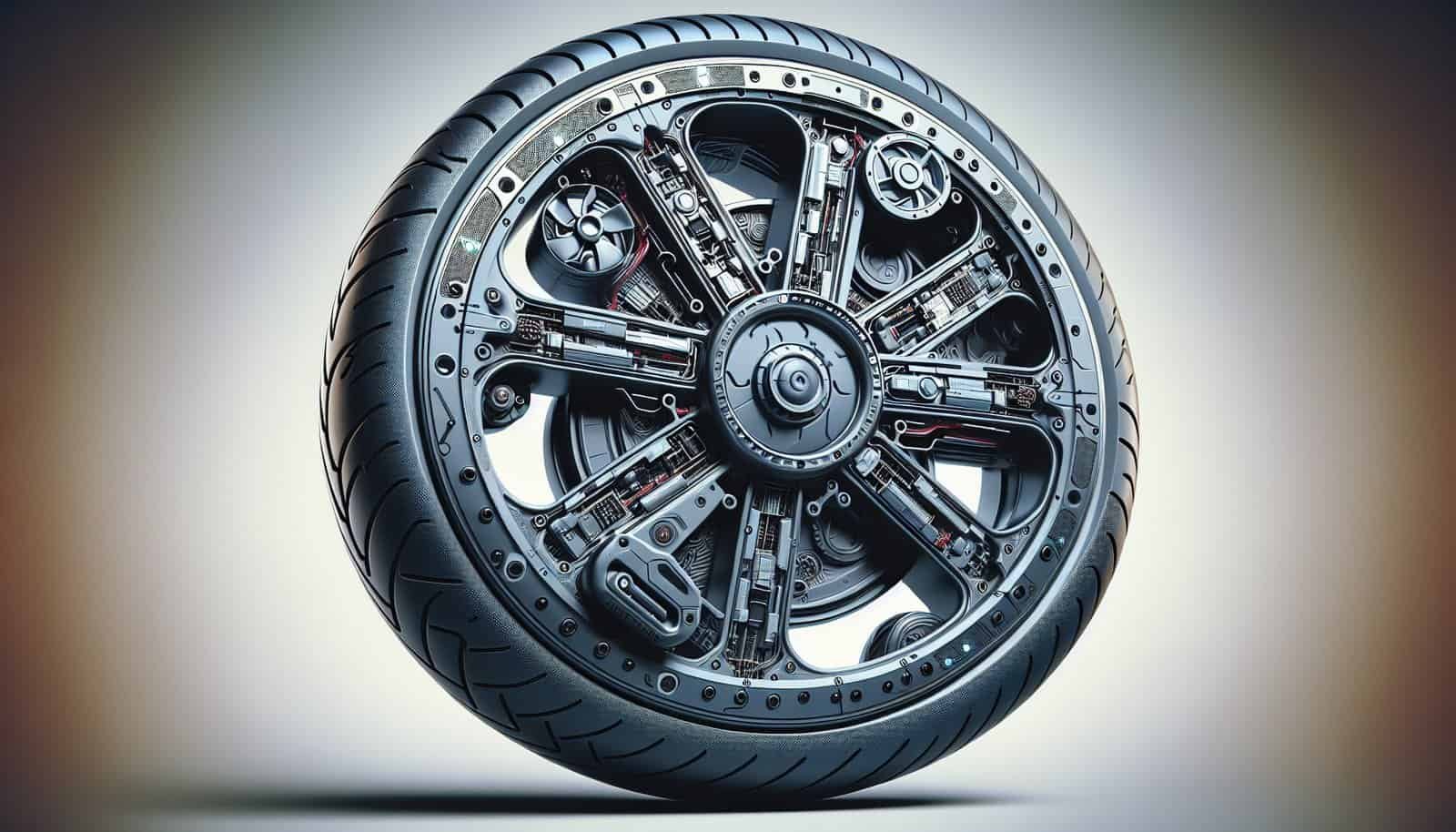Have you ever wondered how the weight of the rider can impact the performance of a hoverboard? Well, it turns out that it plays a significant role in determining how well a hoverboard performs. When a rider is on a hoverboard, their weight affects factors such as acceleration, speed, and battery life. In this article, we will explore the relationship between the weight of the rider and the performance of a hoverboard, and discover why it is important to consider this factor when choosing a hoverboard for yourself. So, let’s dive in and explore the fascinating world of hoverboards and rider weight!
The Role of Weight in Hoverboard Performance

Understanding the Basic Functioning of a Hoverboard
A hoverboard is a two-wheeled, self-balancing electric device that has gained popularity as a trendy mode of transportation. To understand the impact of rider weight on hoverboard performance, it is crucial to first grasp the basic functioning of these devices.
How a Hoverboard Moves
A hoverboard moves by utilizing an intricate balancing mechanism. By shifting your body weight forward or backward, the hoverboard detects this change through its sensors and adjusts the wheel speed accordingly. This mechanism allows the device to maintain balance and move in the desired direction.
Components and Technology
Hoverboards consist of various components and technologies working in tandem. These include powerful motors, control systems, sensors, wheels, batteries, and balancing mechanisms. Each component plays an essential role in ensuring the proper functioning and performance of the hoverboard.
Balancing Mechanism
The balancing mechanism is one of the key components that enable a hoverboard to maintain stability and maneuverability. It constantly monitors the distribution of weight and adjusts the wheel speed accordingly. This mechanism relies heavily on the rider’s weight and balance, making it crucial to consider the impact of weight on hoverboard performance.
Factors That Determine Hoverboard Performance
Several factors contribute to determining the overall performance of a hoverboard. It is important to consider these factors as they establish the baseline for understanding how rider weight affects the device’s performance.
Motor Power and Performance
The power and performance of the motor are critical factors in determining a hoverboard’s capabilities. A more powerful motor can handle higher weight loads and provide better acceleration and speed. However, an underpowered motor may struggle to deliver satisfactory performance, particularly when carrying heavier riders.

Sensors and Control Systems
The sensors and control systems are responsible for interpreting the rider’s movements and distributing the weight to maintain balance. These systems work in conjunction with the balancing mechanism, ensuring precise control and stability. The sensitivity and efficiency of these systems influence the overall performance of the hoverboard.
Wheel Size and Type
The size and type of wheels on a hoverboard greatly affect its performance. Larger wheels provide a smoother and more stable ride over uneven terrain, while smaller wheels offer better maneuverability. The weight of the rider can impact the maneuverability of the hoverboard, especially when considering the wheel size and type.
Tire Traction and Suspension
The quality of the tire traction and suspension system significantly impacts the overall performance of a hoverboard. A good traction system ensures better grip and control, especially on slippery surfaces. A well-designed suspension system can handle the weight shifts caused by the rider, providing enhanced stability and comfort.

Battery Capacity and Performance
The battery capacity and performance are crucial for a hoverboard’s range and longevity. A higher-capacity battery allows for more extended rides and reduces the frequency of recharging. However, increased rider weight can put additional strain on the battery, potentially decreasing its overall performance and range.
Weight Considerations in Hoverboard Design
Hoverboard designers take into account various weight considerations during the design process to ensure optimal performance and safety for riders of different sizes and weights.
Optimal Weight Distribution
An optimal weight distribution design is crucial for the stability and maneuverability of a hoverboard. Designers aim to evenly distribute the rider’s weight across the device, ensuring optimal performance regardless of the rider’s size. This design factor helps in maintaining balance and mitigating the impact of weight on the overall performance.

Structural Integrity and Materials
The structural integrity of a hoverboard is of utmost importance, especially when it comes to supporting the weight of the rider. High-quality materials such as sturdy metals and durable plastics are used, ensuring the device can withstand the load and stress created by different riders. This consideration ensures the longevity and safety of the hoverboard.
Design Adaptations for Stability
Design adaptations are made to enhance the stability of hoverboards and account for the weight of the rider. These adaptations may include wider foot platforms, lower centers of gravity, and reinforced frames. By incorporating these design elements, hoverboards can better handle different weight loads while maintaining stability and control.
Weight Capacity and Load Limit
Hoverboards have specific weight capacity and load limits outlined by manufacturers. These limits indicate the maximum weight the device can safely carry without compromising performance or safety. It is essential to adhere to these guidelines to ensure optimal performance and prevent any potential damage or hazards caused by exceeding the weight capacity.

Rider Weight and Balance
The weight of the rider directly affects the balance and control of the hoverboard. Achieving the right balance is crucial for enjoying a smooth and safe ride. Understanding the relationship between rider weight and balance is essential when considering hoverboard performance.
The Importance of Proper Balance
Maintaining proper balance is essential for safe and effective hoverboard riding. The rider’s weight distribution and center of gravity play a significant role in achieving balance. By distributing your weight evenly, you can maintain stability and lessen the impact of weight on the hoverboard’s performance.
Weight Distribution and Center of Gravity
The distribution of weight and the location of the rider’s center of gravity affect the overall balance and control of the hoverboard. Proper weight distribution and alignment ensure better maneuverability and responsiveness.
Implications for Rider Control
The weight of the rider can have implications for the rider’s control over the hoverboard. Heavier riders may experience slightly different handling and responsiveness compared to lighter riders. It is important for riders of different weights to be aware of and adapt to these differences.
Adjusting Riding Techniques
Riders can adjust their riding techniques to account for their weight and enhance hoverboard performance. This may include adjusting body positioning, shifting weight more deliberately, and experimenting with different riding styles to optimize control and stability.
Effects of Rider Weight on Efficiency
The efficiency of a hoverboard is affected by the weight of the rider. It is important to understand how rider weight impacts efficiency to optimize performance and battery life.
Efficiency and Energy Consumption
When a hoverboard carries a heavier rider, it requires more power to maintain balance and propel forward. This increased power consumption can reduce the overall efficiency of the device, leading to shorter battery life and decreased range.
Power-to-Weight Ratio
The power-to-weight ratio is an important metric that determines how efficiently a hoverboard can move with a specific load. A higher power-to-weight ratio allows the hoverboard to remain responsive and agile, even with heavier riders. Optimizing this ratio ensures optimal performance regardless of rider weight.
Acceleration and Deceleration
The weight of the rider can impact the acceleration and deceleration capabilities of a hoverboard. Heavier riders may experience slightly slower acceleration and require more time and distance to come to a complete stop. This consideration should be taken into account when planning maneuvers and ensuring a safe riding experience.
Impact of Rider Weight on Speed
The speed at which a hoverboard can travel may be affected by the weight of the rider. Understanding these implications helps in managing speed expectations and optimizing performance.
Speed Limitations
Hoverboards come with predetermined speed limitations, usually set by the manufacturer. These limita

